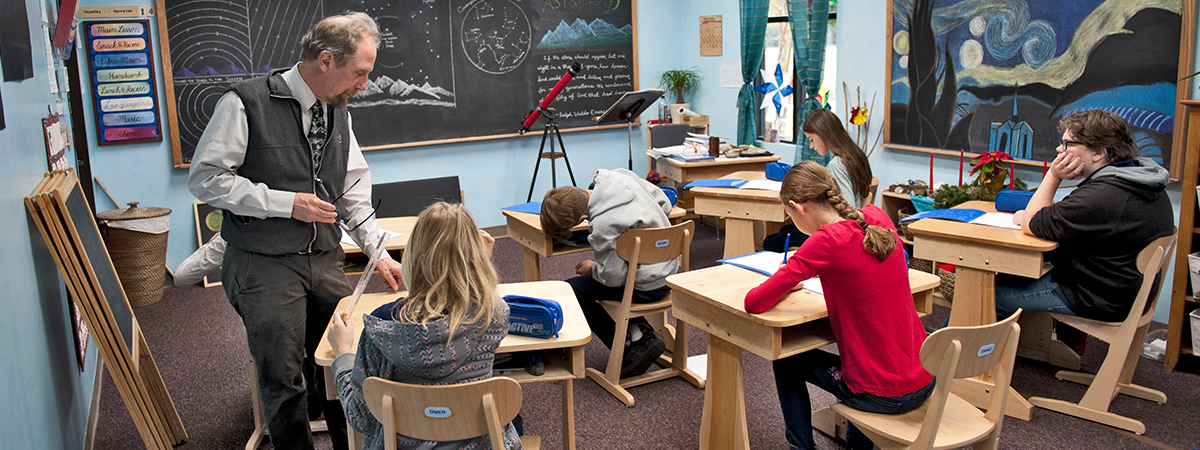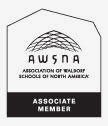Emphasizing the Concrete World
Developmental Picture of the Student
Twelve-year-olds, on the cusp of adolescence, experience new feelings of weight and gravity in their bodies. They become more aware of their own physicality, and they need to feel that they now stand firmly on the earth. They are curious about cause and effect, and they expect straightforward answers to their questions. Their world is defined increasingly by absolutes, so sixth graders make a point to distinguish between right and wrong. The Romans’ genius for laws appeals to their sense of order and justice. As sixth graders become more grounded in who they are, they begin to look to the world to see what it asks of them.
How the Curriculum Meets the 6th Grader
Geology, astronomy and physics are introduced into the curriculum. Students’ increasing awareness of their physical bodies accords with their study of the earth’s physical “body” in geology. Students study rock formations and the forces that change the earth’s surface. After their attention has been drawn down deep into the earth in geology, it is lifted to the heavens in astronomy. Here, students study the relationship of the earth to the stars and planets, starting from a geocentric perspective, just like astronomers of old. This self-centered orientation between earth and sky fits the students own perceptions; later they will discover the heliocentric view.
In physics, the students are introduced to laboratory science. Science in a Waldorf inspired classroom is always based on a study of phenomena. Our students carefully note their experiences in acoustics, optics, heat, magnetism, and static electricity to discover the lawful relationships in the natural world.
The 6th grader’s world is delineated in absolutes and “cause and effect” thinking so the curriculum focuses on strong guidelines and clear differentiation concepts.
In History, the students grasp the significance of cause and effect in the rise and fall of Rome and its effect on European civilization through the Middle Ages. The Roman’s spirit of conquest and their civilization’s ability to dominate and transform the physical world with roads, buildings, and aqueducts is inspiring, but the story has a cautionary side in the equally important consequences of the excesses of the Roman period.
In mathematics, geometric shapes are no longer drawn freehand but precisely constructed with compass and straightedge. Families of geometric figures are classified and studied for the mathematical laws they embody. Formulas for calculating perimeter and area are introduced. In a separate block, the students enter the world of economics as they study percentages, interest, and other aspects of business math.
6th Grade Curriculum Components
- Roman Civilization; Middle Ages
- Geography – Europe, South America, Asia, Africa, Oceania
- Geology & Mineralogy; Astronomy
- Physics – Optics, Magnetism, Acoustics, Static Electricity, Heat
- Advanced Grammar; Stylistic Writing
- Business Math; Constructive Geometry
- World Languages
- Eurythmy
- Fine and Practical Arts – Clay Modeling, Watercolor Painting, Geometric Drawing
- Class Play, Chorus, Recorder
- Physical Education – Juggling and Circus Arts
LIFE SKILLS and Homework EXPERIENCED IN 6th GRADE
- Author topic statements and write rough drafts; present and incorporate revisions to book reports and an independent research paper
- Organize and study take home math sheets and prepare for weekly spelling reviews
- Complex memorization of their lines and actions for parts in the class play
- Develop mastery in practice of musical instruments
6th Grade Teacher

Angela Harris Middle School Teacher




